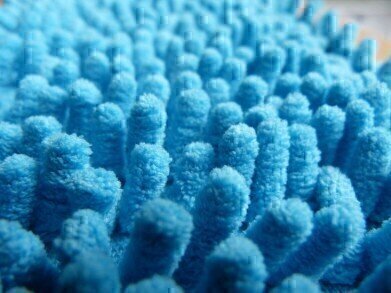Waste Management
Are Microfibres the Same as Microplastics?
Feb 21 2022
Over recent years, you might have become increasingly aware of the problem of microfibre and microplastic pollution. Since plastic has an extremely long shelf life, virtually every piece of plastic that has ever been created is still in its existence today. However, larger items can break down into smaller fragments over time, thus creating microfibre and microplastic pollution.
While that sounds straightforward enough, these two terms are often used interchangeably and the subtle but significant distinction between them is rarely understood. Put simply, microfibres are a subcategory of microplastics – but not all microfibres are microplastics. At the same time, not all microplastics are microfibres, either. Confused? Fear not, since all be explained below.
What are microplastics?
From a technical perspective, microplastics are defined as particles of plastic that are no greater than 5mm in length. For context, that’s roughly the same size as a single grain of rice, giving you an idea of just how diminutive these pesky pieces of pollution are.
Thanks to their tiny size and their ability to endure in the environment for decades, centuries or even millennia, microplastics can traverse great distances without degrading. It’s for this reason that they’re now found all over the world, from the tallest mountains to the deepest sea trenches. Microplastics have even been found in the air we breathe and the food and water we consume, which is why it has recently been discovered that they can even be absorbed into the placentas of unborn babies.
What are microfibres?
Microfibres are similar to microplastics in that they are defined as being smaller than 5mm in size – but their composition is not limited to plastic alone. Any fibre under that 5mm threshold is defined as a microfibre and those which are created from natural sources, such as cotton, wool or hemp, can biodegrade in the atmosphere.
However, plastic microfibres (such as those produced by nylon, polyester or other synthetic materials) will not decompose over time and can cause untold damage to the internal organs of the organisms which consume them. What’s more, they can also fill an animal’s stomach without providing any nutritional benefit, thus preventing it from consuming the sustenance it needs to survive.
Where do microplastics and microfibres come from?
When it comes to microplastics, there are generally two different kinds: primary and secondary. Primary microplastics are those which are released directly into the environment from such sources as erosion of rubber tyres, laundering of clothes and cosmetics products which contain microbeads as an abrasive substance. Secondary microplastics are larger items which break down over time.
On the other hand, microfibre pollution is generally always secondary in nature. Its chief sources are the washing and drying of clothes, which is thought to be responsible for over a third of all primary microplastic pollution, and the degradation of fishing nets made from nylon and other artificial substances. As such, microplastics and microfibres share many of the same characteristics and often overlap, but they’re not the same classification altogether.
Events
IWA World Water Congress & Exhibition
Aug 11 2024 Toronto, Canada
Aug 25 2024 Stockholm, Sweden and online
Sep 03 2024 Mexico City, Mexico
Sep 03 2024 Mexico City, Mexico
Sep 03 2024 San Diego, CA, USA













